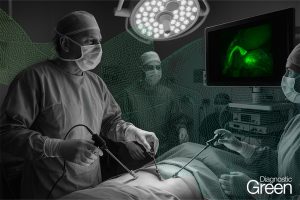Soft tissue sarcomas (STS) are rare malignant tumors often associated with poor outcomes and high local recurrence rates. Current tools for intraoperative and definitive margin assessment include intraoperative frozen section and permanent pathology, respectively. Indocyanine green dye (ICG) is a historically safe fluorophore dye that has demonstrated efficacy for intraoperative margin assessment in the surgical management of both breast and gastrointestinal cancers.
This study is a prospective, non-randomized clinical study conducted on patients with confirmed or suspected STS. Patients younger than 18 years, with a prior adverse reaction to iodine or fluorescein, or with renal disease were excluded from the study. Intravenous ICG was infused approximately three hours prior to surgery at a dosage of 2.0-2.5 mg/kg, and following tumor resection, the excised tumor and tumor bed were imaged for fluorescence intensity. When scanning the tumor bed, a threshold of 77% calibrated to the region of maximum intensity in the resected tumor was defined as a positive ICG margin, according to published protocols from the breast cancer literature. ICG results were then compared with the surgeon’s clinical impression of margin status and permanent pathology results. Out of 26 subjects recruited for the original study, 18 soft tissue sarcomas (STS) were included for analysis. Three subjects were excluded for having bone sarcomas, and five subjects were excluded due to final pathology, which was ultimately inconsistent with sarcoma.
The average age of patients was 64.1 years old (range: 28-83), with an average ICG dose of 201.8 mg. In 56% (10/18) of patients, ICG margins were consistent with the permanent pathology margins, with 89% specificity. The use of ICG as an intraoperative adjunct to obtaining negative margins in soft tissue sarcoma surgery is promising. However, studies with larger sample sizes are warranted to further delineate the accuracy, optimal dosage, timing, and types of sarcoma in which this diagnostic tool may be most useful.




